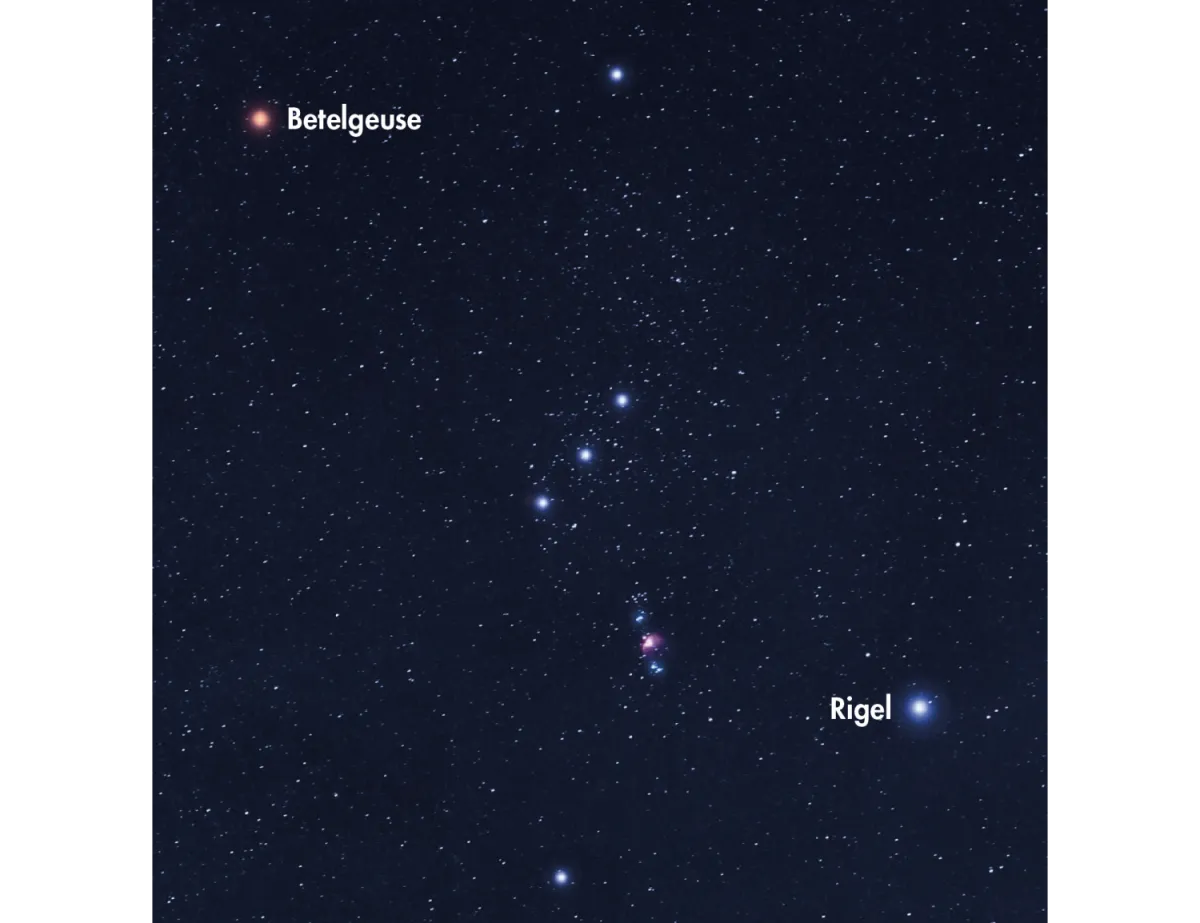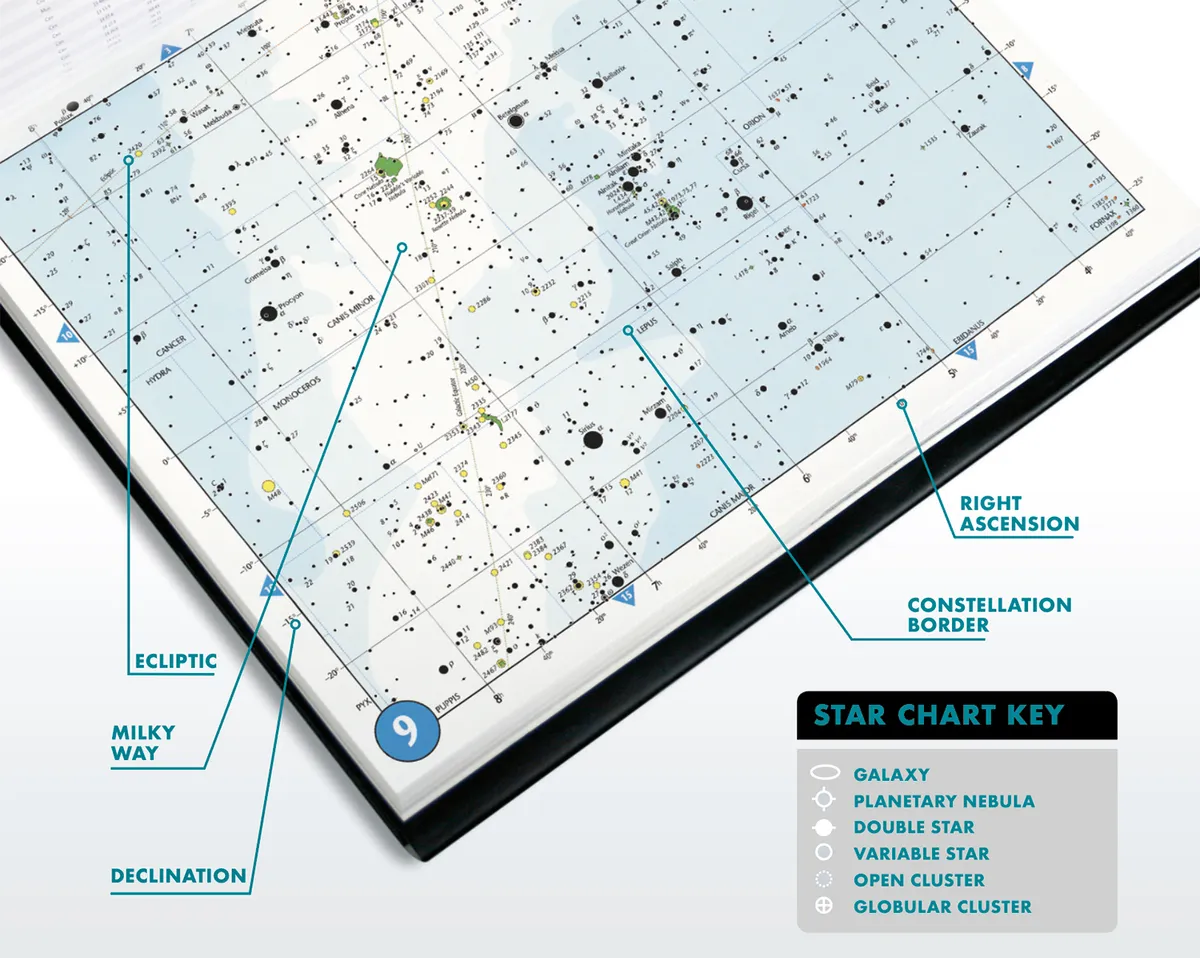For anyone starting out in astronomy and attempting to find their way around the night sky using a star chart or smartphone astronomy app, on paper the celestial sphere can initially appear as a confusing jumble of Latin or Arabic names and Greek letters.
So how do astronomers name stars? What do stars' names mean, and how do you use a star chart to your advantage?
Of the thousands of stars visible from planet Earth, only a few hundred have been given proper names, mostly by the astronomers of antiquity.
For more on stellar science, read our guide to stars, why stars twinkle or how astronomers measure the brightness of stars.
Find out more about the history of astronomy.

Many star names are based on corruptions of Arabic phrases that describe their place within a constellation – for example, Algol in Perseus is derived from ‘Ra’s al Ghul’, an expression meaning ‘head of the demon’ (for more on this, read our guide to Arabic astronomy).
It represents the eye of the Gorgon Medusa being held aloft by Perseus.
Some stars have been named entirely on their own merits, such as Sirius, the brightest star in the heavens, which is derived from an Ancient Greek word meaning ‘scorcher’.
How the constellations got their names

Most of the information we have about the Greeks’ thinking and constellation designs comes from a giantmulti-volume work, The Almagest (alsoknown as The Great Syntaxis Of Astronomy), by the mathematician and astronomer Ptolemy around 150 AD.
Well over a thousand years later, this ‘book’ found its way to Italy and was translated into Latin, which is why we haveLatin names for the constellations that endure today.
Up until the dawn of the 17th century these were the only widely accepted stellar designations we had, but German astronomer Johann Bayer changed that in 1603 with the publication of his star atlas, Uranometria.

In homage to earlier astronomers, he labelled the brightest stars of a constellation with Greek letters – usually alpha for the brightest, then beta, gamma, all the way to omega.
So Sirius in Canis Major, the constellation of the Great Dog, also became known as Alpha (α) Canis Majoris. When the Greek letters ran out, he used Latin letters.
You’ll notice that the constellation’s name is spelt differently when being used to describe a star. This is the genitive form of the constellation’s name, meaning ‘belonging to’.
All constellations have this Latin possessive, such as 'Geminorum' for ‘belonging to Gemini’.
They also have three-letter abbreviations: Canis Major’s is CMa, so you might see Sirius referred to as ‘α CMa'.
Naming the brightest star

We say that the alpha star is ‘usually’ the brightest because there are a handful of instances where Bayer either got it wrong or decided to apply a different convention.
In Orion, for example, Rigel is brighter than Betelgeuse, but Betelgeuse is the alpha star, ostensibly because Bayer recognised they were of similar brightness and simply named Betelgeuse as the alpha star because it rises first.
Bayer’s is not the only astronomical catalogue – in fact almost every star in the night sky is part of one catalogue or another – but it is the most widely referenced.
Of the myriad other star catalogues, perhaps the most useful is John Flamsteed’s, which organises stars by constellation and designates them with a number. In this scheme, Sirius is 9 Canis Majoris.
How to read a star chart

That’s how stars are named, but how do you translate this knowledge onto the night sky? The answer is to consult a star chart.
Stars are most commonly marked by their Bayer designations or, if they lack a Bayer letter, their Flamsteed number.
One thing that you’ll immediately notice is that the brighter stars are shown by the biggest dots. Although all stars are points of light in the real night sky, it is impossible to show their brightness any other way on a printed page.
If your chart happens to be circular – as is the case with the monthly all-sky charts often found in astronomy magazines – be aware that the constellations will appear warped at the edges.
When a 3D sky dome is flattened, the sky at the horizon gets stretched, which means the star patterns will not match those in the sky.
Another form of star chart that's incredibly useful and simple to use is a planisphere. It can be adjusted to show the night sky depending on the date and which direction you're facing.

But there’s more to atlases than just star positions and brightness – although they are, of course, vitally important if you’re trying to learn the sky.
With symbols that don’t detract from the overall view, you can identify stars that are variable in brightness - known as variable stars - or appear together with another star, forming a ‘double star’ like Mizar and Alcor in the Plough asterism or Zeta Reticuli in the southern hemisphere sky.
Depending on your atlas there may also be additional symbols for deep-sky objects such as nebulae, globular clusters and galaxies.
A useful atlas should have charts that vary in detail. You may, for example, have general seasonal charts or monthly charts, close-ups of some constellations and possibly a location chart for some of the deep-sky objects.
It may also display the ecliptic and celestial equator, as well as the coordinate lines of right ascension and declination.
As a beginner it’s probably the seasonal or monthly charts that you’ll use the most, so make sure you’re happy with the style.
Greek alphabet letters and symbols
It’s well worth getting to know the Greek alphabet if you're really interested in learning the night sky and different stars' designations.
| Greek letter | Greek letter name | Equivalent |
|---|---|---|
| α | Alpha | a |
| β | Beta | b |
| γ | Gamma | g |
| δ | Delta | d |
| ε | Epsilon | e |
| ζ | Zeta | z |
| η | Eta | h |
| θ | Theta | th |
| ι | Iota | i |
| κ | Kapda | k |
| λ | Lambda | l |
| μ | Mu | m |
| ν | Nu | n |
| ξ | Xi | x |
| ο | Omicron | o |
| π | Pi | p |
| ρ | Rho | r |
| σ | Sigma | s |
| τ | Tau | t |
| υ | Upsilon | u |
| φ | Phi | ph |
| χ | Chi | ch |
| ψ | Psi | ps |
| ω | Omega | o |
